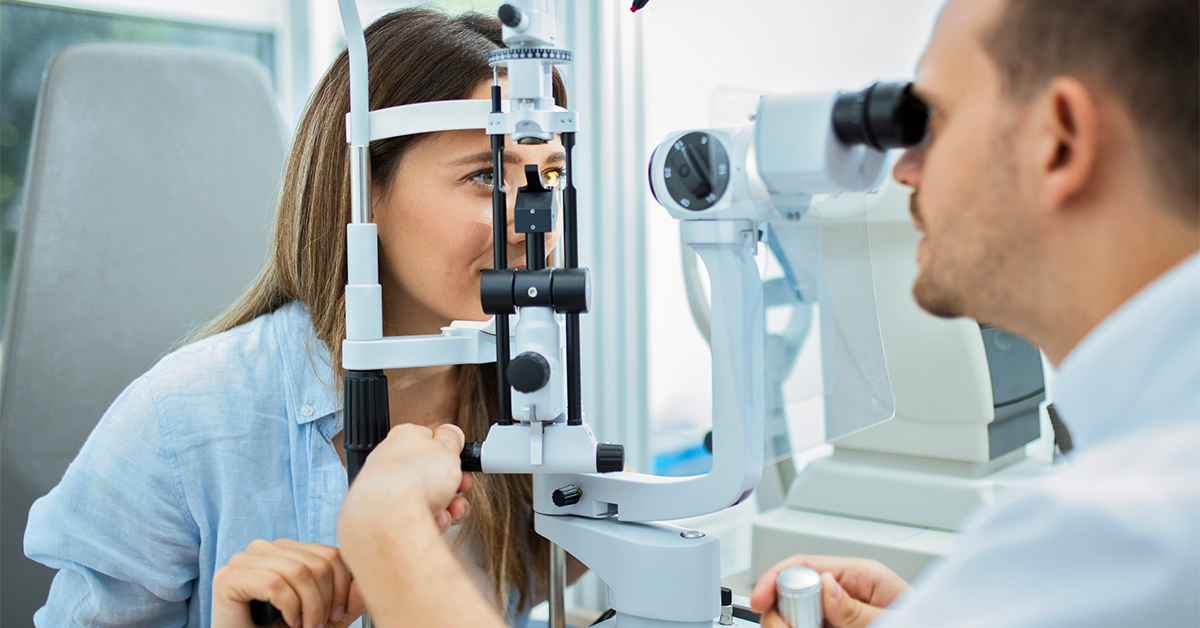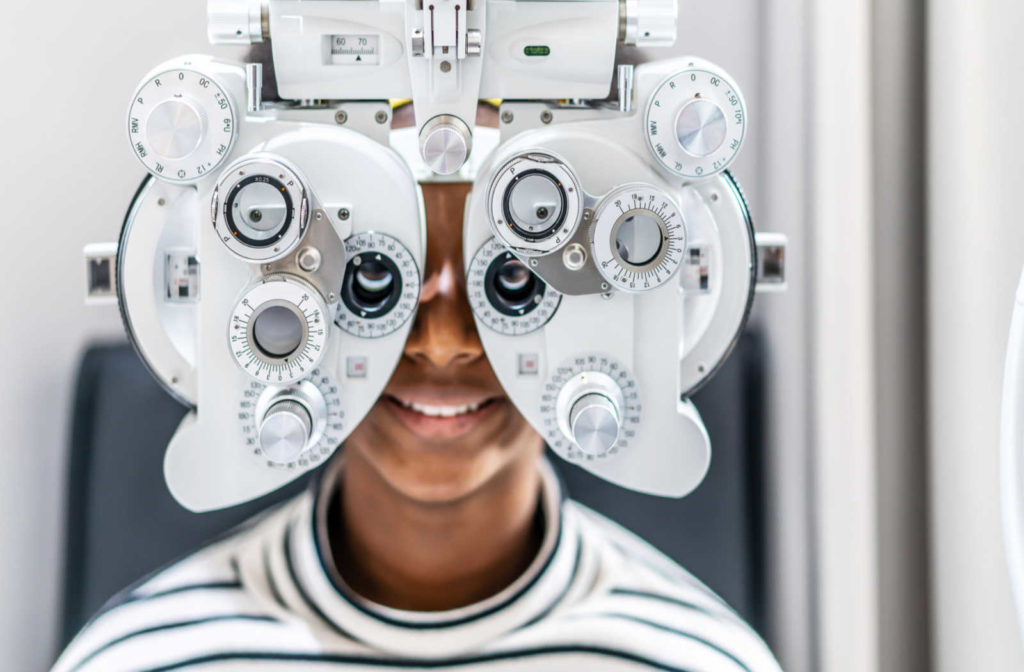Comprehending the Role of Your Eye Doctor in Keeping Vision
Comprehending the Role of Your Eye Doctor in Keeping Vision
Blog Article
Exploring the current Technical Improvements in Optometry and What They Mean for Eye Doctors
In the ever-evolving area of optometry, recent technical developments are improving exactly how experts come close to eye care. From the accuracy of Optical Comprehensibility Tomography to the nuanced understandings used by AI-driven diagnostic tools, these advancements are setting new criteria in patient assessment and therapy. Teleoptometry is poised to redefine accessibility, making certain that knowledge transcends geographical restrictions. As these innovations penetrate the practice, optometrists are confronted with the difficulty of embracing these tools to boost patient outcomes. Yet, the question remains: how will these technological changes redefine the roles and duties within the occupation?
Developments in Diagnostic Equipment
Progressing the field of optometry, advancements in analysis tools have actually revolutionized the means eye care professionals analyze and identify eye conditions and visual problems. The previous decade has experienced significant technical advancements, enabling even more comprehensive and precise analyses. Optical Coherence Tomography (OCT), for instance, gives high-resolution cross-sectional photos of the retina, permitting for the very early discovery of illness such as glaucoma and age-related macular deterioration. This non-invasive imaging strategy has become vital in contemporary optometric method.
One more secret technology is the introduction of sophisticated corneal topography systems, which map the surface curvature of the cornea with precision. These tools are particularly beneficial for fitting contact lenses and detecting corneal conditions. Additionally, electronic retinal imaging has actually changed typical ophthalmoscopy, providing detailed, scenic views of the retina that promote extensive visual examinations.
The growth of wavefront aberrometry has actually likewise been crucial, making it possible for the evaluation of refractive mistakes with unequaled accuracy (Eye Doctor Optometrist). This modern technology helps in personalizing restorative lenses and improving surgical end results for refractive surgical procedures. Jointly, these diagnostic innovations empower eye doctors to supply exceptional individual treatment, guaranteeing early treatment and customized treatment approaches, inevitably enhancing visual health and wellness outcomes
AI in Person Monitoring
Building on the structure of innovative diagnostic devices, the unification of fabricated intelligence (AI) in patient monitoring stands for a transformative jump for optometry. AI systems are increasingly utilized to enhance effectiveness, precision, and customization in client care.
In addition, AI-driven platforms promote streamlined individual communications and management processes. Automated organizing, digital appointments, and customized follow-up strategies not just improve patient complete satisfaction however additionally optimize time management for practitioners. These systems can triage patients based upon the necessity of their problems, ensuring that those in critical requirement get timely focus.
In addition, AI boosts decision-making by offering eye doctors with evidence-based referrals and treatment paths. By integrating data from electronic health and wellness documents, AI tools provide understandings that notify scientific choices, reducing the danger of mistakes and improving patient outcomes. As AI remains to develop, its duty in patient administration will likely expand, reshaping the landscape of optometric treatment.
Breakthroughs in Retinal Imaging
In the world of optometry, retinal imaging has seen remarkable technical advancements that are improving analysis capacities and client care. Innovations such as Optical Comprehensibility Tomography (OCT) and fundus digital photography have revolutionized how eye doctors picture and evaluate the retina. OCT, particularly, supplies high-resolution, cross-sectional photos of the retina, enabling the thorough evaluation of its layers. This ability is invaluable for very early detection and monitoring of conditions like glaucoma, diabetic person retinopathy, and age-related macular degeneration.
Enhanced imaging modalities like OCT angiography are further refining analysis accuracy. Optometrist Chino. Such advancements facilitate the identification of min retinal adjustments that can that site signify disease development.
Moreover, developments in artificial knowledge are augmenting retinal imaging by enabling automatic analysis of huge datasets. These systems assist optometrists in recognizing patterns indicative of pathology, consequently enhancing diagnostic precision and efficiency. Jointly, these advancements are transforming retinal imaging right into a keystone of modern-day eye care, enhancing results and increasing therapeutic possibilities.
Teleoptometry's Expanding Role
Teleoptometry is increasingly becoming an important part of eye treatment, driven by improvements in digital interaction and diagnostic tools. As optometry accepts electronic makeover, teleoptometry promotes remote examinations, allowing eye doctors to extend their solutions past standard boundaries. This is especially beneficial in country and underserved locations where access to specialized eye treatment is commonly minimal. By leveraging high-resolution video conferencing and progressed retinal imaging, optometrists can carry out thorough eye exams from afar, making sure prompt diagnosis and therapy.
The combination of expert system (AI) additional boosts teleoptometry, allowing the evaluation of visual data and assisting in the detection of eye conditions such as glaucoma and diabetic person retinopathy. AI-powered formulas can swiftly analyze complex imaging information, supplying optometrists with important understandings that strengthen scientific decision-making.
In addition, teleoptometry supports continuity of care with smooth combination with electronic wellness records (EHRs), allowing optometrists to maintain comprehensive client histories. When consulting with different specialists., this makes certain that clients obtain regular and personalized care even.
Despite these benefits, challenges continue to be, including ensuring information safety and security and taking care of client assumptions. However, teleoptometry represents a considerable stride in the direction of even more accessible, efficient, and patient-centered eye care. As technology develops, its duty is poised to expand further.
Future Patterns in Eye Treatment
A myriad of cutting-edge he said patterns is set to reshape the future of eye treatment, driven by technical advancements and the developing demands of patients. One significant fad is the integration of man-made knowledge (AI) in diagnostics, which assures to boost the accuracy and efficiency of eye examinations. AI formulas can examine vast quantities of information from retinal images, possibly identifying problems like diabetic retinopathy this website and glaucoma earlier than conventional techniques.
Furthermore, customized medicine is acquiring grip in optometry, with genetic testing notifying customized treatment plans. This approach aims to enhance patient outcomes by tailoring treatments to specific hereditary accounts. Wearable modern technology, such as clever contact lenses, is also on the horizon, offering real-time tracking of intraocular pressure or sugar degrees, hence giving continual insights into systemic and ocular wellness.
The fostering of enhanced truth (AR) and digital truth (VR) in training and patient education and learning is another arising trend. These innovations provide immersive experiences that can enhance understanding and abilities both for clients and eye doctors. As these trends evolve, eye doctors need to stay abreast of technical improvements to provide innovative treatment, guaranteeing improved patient end results and fulfillment in the vibrant landscape of eye care.
Verdict

Collectively, these analysis innovations empower eye doctors to deliver exceptional individual care, ensuring very early treatment and tailored therapy techniques, ultimately enhancing visual health and wellness end results.

As these technologies proceed to advance, optometrists have to adapt and integrate them into method, inevitably enhancing process effectiveness and elevating the criterion of eye care supplied to individuals.
Report this page